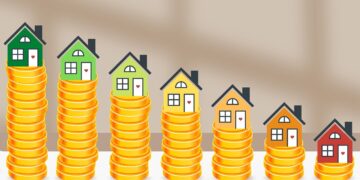Green Living: Sustainable Home Designs for a Better Tomorrow
In today’s world, the push for sustainability and eco-awareness is more significant than ever. With concerns about climate change and environmental degradation, homeowners and builders are turning towards sustainable home designs as a way to contribute to a healthier planet. This article delves into the concepts of green living through sustainable architecture, offering insights into how you can design or retrofit your home to be both environmentally friendly and aesthetically pleasing.
Understanding Sustainable Home Design
Sustainable home design integrates eco-friendly principles in the planning, construction, and management of buildings. Such designs not only help reduce the environmental impact but also offer cost-effective solutions to everyday living. Key components include energy efficiency, water conservation, and the use of renewable resources, all of which contribute to a greener future.
Key Principles of Eco-Friendly Architecture
- Energy Efficiency: This involves designing homes that require less energy for heating, cooling, and lighting, achieved through better insulation, high-performance windows, and energy-efficient appliances.
- Water Conservation: Sustainable homes use fixtures that reduce water waste, such as low-flow showers and toilets, alongside systems for rainwater harvesting and greywater reuse.
- Sustainable Materials: Choosing materials that are non-toxic, sustainably produced, or recycled is crucial for reducing the home’s carbon footprint.
Popular Sustainable Building Techniques
To achieve a high standard of energy efficiency and sustainability, several innovative building techniques can be utilized. Here’s a look at some of the most effective strategies:
Passive Solar Building Design
Passive solar techniques involve orienting the building to maximize natural heating from the sun. During the winter, sunlight passes through windows and is absorbed by heat-retaining surfaces like brick walls or concrete floors that radiate the heat back into the home.
Green Roofing
Green roofs are not only aesthetically pleasing but also provide insulation, reduce stormwater runoff, and help lower urban air temperatures. Plants on roofs act as a natural air filter, improving home air quality too.
Smart Home Technology
Incorporating smart technology can significantly boost a home’s sustainability. Automated systems for lighting, heating, and cooling optimize energy use throughout the home, ensuring devices are only active when needed.
Incorporating Renewable Energy
Utilizing renewable energy is a cornerstone of sustainable home design. Solar panels and wind turbines can provide clean, free power, significantly reducing reliance on fossil fuels and lower utility bills.
Benefits of Solar Energy
Solar power systems have become increasingly popular due to their ability to lower emissions and offer long-term savings. Plus, governmental incentives for solar panel installation can provide additional financial benefits.
Exploring Wind Energy
For homes in windy areas, small-scale wind turbines can supplement energy needs. They can be integrated into the building’s design or installed on the property.
Building with Sustainability in Mind
When planning a sustainable home, consider every component and how it can contribute to a greener building:
Eco-Friendly Insulation
Insulation like sheep’s wool or recycled denim prevents heat loss more effectively and sustainably than many traditional materials.
Water-Saving Appliances
Modern eco-friendly dishwashers and washing machines use less water and energy, drastically reducing the home’s environmental impact.
Sustainable Flooring
Options such as reclaimed wood or bamboo offer durability and natural beauty without the destructive impact of traditional wood-flooring practices.
Common Questions About Sustainable Home Design
Is sustainable design more expensive?
Initially, sustainable materials and designs might cost more upfront, but they typically lead to significant savings in energy costs and maintenance over time.
Can older homes be retrofitted for sustainability?
Yes, older homes can be equipped with new technologies like improved insulation, energy-efficient windows, and solar panels to enhance their sustainability.
Are there incentives for eco-friendly home construction?
Many governments offer tax rebates, subsidies, or credits for sustainable practices and renewable energy usage. It’s worth checking local regulations for potential benefits.
Conclusion
Embracing sustainable home designs isn’t just about making an environmental statement—it’s about creating healthier living spaces and communities for the future. By incorporating energy efficiency, renewable resources, and eco-friendly materials, we can significantly lessen our ecological footprint. Consider turning to sustainable designs for your next home project to contribute to a better tomorrow.










